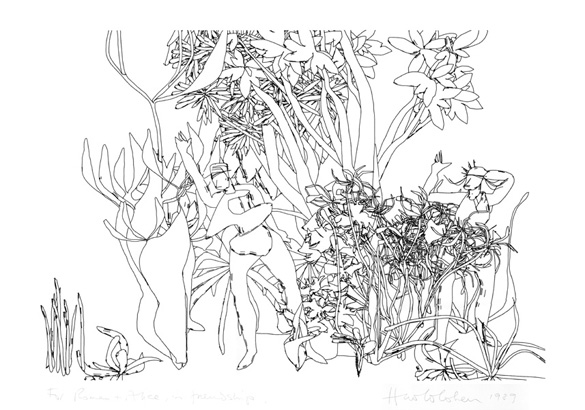
Shortly after joining the faculty of UC San Diego in 1968, British artist Harold Cohen asked, “What are the minimum conditions under which a set of marks functions as an image?” He set out to answer this by writing a computer program that would create original artistic images.
The result, which he dubbed AARON, has been drawing new images since 1973, first still lifes, then people, then full interior scenes with color. These have been exhibited in galleries throughout the world.
Carnegie Mellon philosopher David E. Carrier writes, “A majority of the viewers of AARON’s work find recognizable shapes in it; the drawing above appears to contain human figures. But AARON here used only the twenty or thirty rules it usually uses, with no special reference to human beings. Does knowing this tell us something about the structure of representation?”
Cohen asks, “If what AARON is making is not art, what is it exactly, and in what ways, other than its origin, does it differ from the ‘real thing?’ If it is not thinking, what exactly is it doing?”
“At the risk of stating the obvious, it seems to me that one of the things human beings find interesting about drawings in general is that they are made by other human beings, and here you are watching the image develop as if it is being developed by another human being. … When the drawing is finished, it functions as a human drawing. … A large part of what we value in art is not the ability of the artist to communicate special meanings, but rather the ability of the artist to present the viewer with something that stimulates the viewer’s own propensity to generate meaning.”
